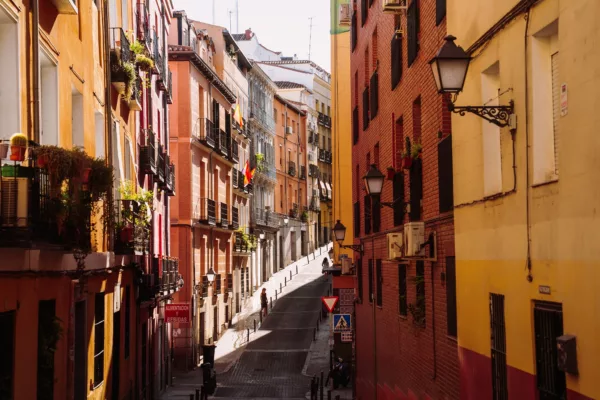Where to Have The Best Outdoor Adventures on Newfoundland’s East Coast
With nothing between Newfoundland’s east coast and Ireland, this region is all about the ocean. Wild coastal hiking trails and opportunities to get out on the water are around every corner. Newfoundlanders are famous for their hospitality, and locals are usually happy to chat about traditions, folklore and where to find the best hiking trail.

In late spring, chances of seeing icebergs from Newfoundland’s east coast are high. In summer, it’s migratory pathway for several species of whales. Magic lives here.
If you’re lucky enough to live nearby or want to plan a future trip, here are the best places to explore.
Fogo Island and Change Islands

Settled in the late 1600s by mostly Irish and English fisher families who had crossed the Atlantic to take advantage of the plentiful cod supply, these islands in the northeast corner of Newfoundland are so small that almost every trail is a coastal hike with amazing views of the wild Atlantic Ocean. There are over 200 kilometres of paths, routes and trails between these two islands! Fishing villages filled with brightly painted “saltbox” houses and fishing “stages” dot the landscape, making it look like a postcard.
On Fogo Island, the 360-degree viewpoint at Brimstone Head Trail (two-kilometre roundtrip) is the place for stunning seascapes. Brimstone Head has the unique claim-to-fame of being one of the four corners of the world, as declared by the Flat Earth Society of Canada.

A short ferry ride away are the Change Islands. On the north of the larger island is Squid Jigger’s Trail, a 6.3-kilometre trail that hugs the shoreline, as you wander through secluded coves, along boardwalks through sub-arctic bogs and boreal forest and up steep cliffs where you can sit and contemplate the pounding surf below. A bit flatter, but no less scenic, is Shoreline Trail (also 6.3 kilometres) on the west side of the island—the perfect place to watch the sun go down.
Greenspond

Another tiny island joined to the Newfoundland mainland via a causeway, this off-the-beaten-path village on the northeast coast was settled in the 1690s and is one of the oldest continuously inhabited fishing outports in the province (once known as the “capital of the north”). The terrain is mostly rocky on the six-kilometer Greenspond Walking Trail which circumnavigates the island. There are extensive sections of boardwalk through brush and bog, and benches are positioned strategically to allow for prime views of the Puffin Island Lighthouse and the sea. In season, chances of seeing both icebergs and whales are high. Wear warm clothes and hold on to your hat—it’s windy here. A nice place to warm up after your hike is Ida’s Place, a tearoom in a renovated historic saltbox house.
Terra Nova National Park

Terra Nova National Park is Canada’s most easterly national park. Along with extensive hiking trails, the park has over 200 kilometres of coastline to explore. Kayak rentals are available at the Visitors Centre from Happy Adventure Tours, making it easy to explore the park’s many sheltered inlets and headlands, which, depending on the time of year, seals and whales are known to visit (including humpback and minkes). You will also spot several different kinds of jellyfish, sea urchin and fish, and possibly see eagles flying overhead.
East Coast Trail

This long-distance hiking trail covers more than 350 kilometres of wilderness through headlands and coves and over cliffs. The East Coast Trail skirts the edge of the peninsula just north of Newfoundland’s capital city, St. John’s, and goes south to the fishing town of Cappahayden. There are several abandoned settlements enroute, historic lighthouses and spectacular waterfalls. On the section between Cape St. Frances and Cappahayden, there’s a natural wave-driven geyser called the Spout. You will also pass through several lovely small fishing communities where you can experience the true culture of Newfoundland.
Hare Bay

Named after the abundant Arctic hares that used to live here, Hare Bay was settled in the late 1800s. It’s located next to Dover Fault, a major geological site where the North American and European continents collided 150 million years ago. At Hare Bay Adventures, you can book a traditional rowboat tour around the shores and islands. Newfoundland rowboats are specially made from local boreal forest wood to handle the rugged Atlantic Ocean waves and were traditionally used by one man for hook and line fishing (on this tour, you can ask to try some traditional “hand lining” for a cod). Your guide will teach you about the geological features of the fault and the history of Newfoundland fishing, before finishing the day with a traditional beach boil-up dinner, an informal dining experience around a fire. Maybe you will even taste some Screech, the potent local alcohol that can make you an honorary Newfoundlander.

Layer up for East Coast adventures:
Base Layers
Mid Layers
Outer Layers
PS. Join us and Live the Adventure!
The coolest subscription box in Canada is explore magazine‘s Live the Adventure Club.
Four times a year, we’ll deliver a box full of brand-new adventure gear right to your door. Each box contains gear items valued at over $150 for only $97 plus tax!
Sign up now and we’ll even cover shipping!
When you purchase something via the links in our articles, we may earn a small affiliate commission. Read more about our policy.
















